
The Satyrinae, the satyrines or satyrids, commonly known as the browns, are a subfamily of the Nymphalidae. They were formerly considered a distinct family, Satyridae. This group contains nearly half of the known diversity of brush-footed butterflies. The true number of the Satyrinae species is estimated to exceed 2,400.

Mycalesis oculus, the red-disc bushbrown, is a satyrine butterfly found in southern India. It is similar in markings to Mycalesis adolphei but distinguished by the reddish band around the large apical spots on the upper forewings.

The Satyrini is one of the tribes of the subfamily Satyrinae. It includes about 2200 species and is therefore the largest tribe in the subfamily which comprises 2500 species.
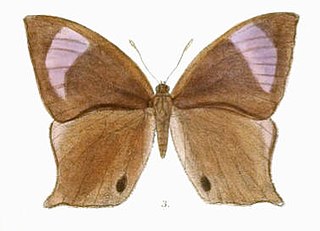
Parantirrhoea is a monotypic butterfly genus in the family Nymphalidae. Its only species, Parantirrhoea marshalli, the Tranvancore evening brown, is endemic to the Western Ghats of India. James Wood-Mason described this species from the specimens in the collection of G F L Marshall which were collected by Harold S. Ferguson who was director of the State Museum at Trivandrum. Little was known about the species in the wild until a population was discovered in the Periyar Tiger Reserve in 1993. Sightings of both sexes of this butterfly are reported in the southern region of the Western Ghats in 2002. In 2006, larvae were collected from an Etah jungle like habitat in Kallar-Ponmudi valley, a northerly extension of the Ashambu hills of southern Western Ghats. Caterpillars collected were reared in laboratory conditions. It is also known from Periyambadi in Kodagu.

Heteropsis adolphei, the red-eye bushbrown, is a species of satyrine butterfly found in southern India. The species name is after Adolphe Delessert who collected the first specimens based on which the species was described.
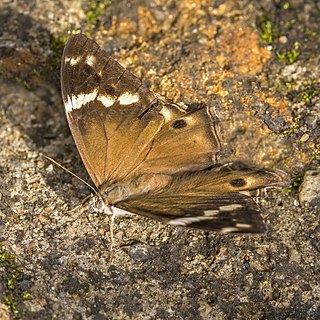
Lethe drypetis, the Tamil treebrown, is a species of Satyrinae butterfly found in south India and Sri Lanka.

Lethe europa, the bamboo treebrown, is a species of Satyrinae butterfly found in Asia.

Ypthima asterope, the African ringlet or common three-ring, is a species of Satyrinae butterfly found in most dry areas of Africa and Asia.

Ypthima baldus, the common five-ring, is a species of Satyrinae butterfly found in Asia.

Ypthima ceylonica, the white fourring, is a species of Satyrinae butterfly found in Sri Lanka and India.

Ypthima chenu, the Nilgiri fourring, is a species of Satyrinae butterfly found in south India.
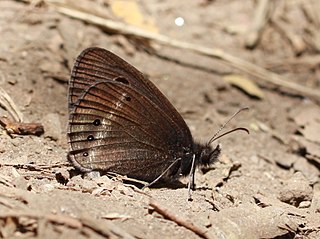
Ypthima ypthimoides, the Palni fourring, is a species of Satyrinae butterfly found in south India.

Orsotriaena medus is a butterfly found in south Asia, southeast Asia, and Australia. It is the only species in the genus Orsotriaena, first described by Hans Daniel Johan Wallengren in 1858.
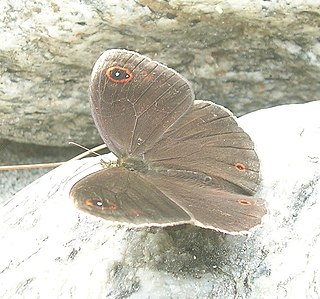
Callerebia scanda, the pallid argus, is a brown (Satyrinae) butterfly that is found in the Himalayas.

Callerebia dibangensis, the Roy’s argus or bright-eyed argus is a species of Satyrinae butterfly found in eastern Himalaya, India.

Ypthima watsoni, the looped three-ring, is a species of Satyrinae butterfly.
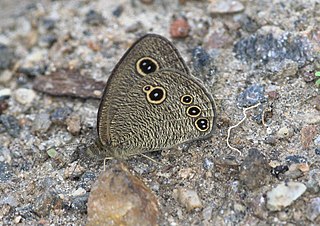
Ypthima nikaea, the Moore's fivering, is a species of Satyrinae butterfly found in Asia.


















